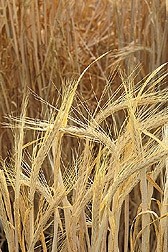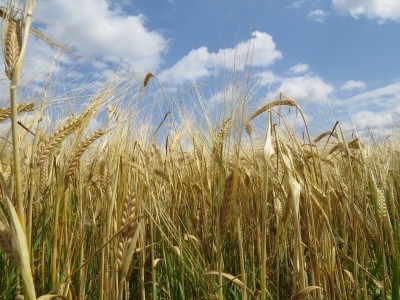New crop research could open the door to better performing feed barley

Dr Wendy Harwood, a senior scientist engaged in crop transformation research in the UK, recently updated the committee on animal feedstuffs of the Food Standards Agency (FSA) on new plant breeding techniques (NPBTs).
“NPBTs such as genome editing and cisgenesis provide plant breeders with faster methods to boost crop performance as they allow more precise modification of plant genomes than was previously possible.
“There is huge excitement in the research community over their potential for the feed sector and food security in general,” she told this publication today.
Genome editing
Harwood, who works at the Norwich-based plant science facility, John Innes Centre, said researchers have employed the genome editing method to generate herbicide tolerant plants and this could be one of the first commercial applications of relevance to animal feeds.
She said genome editing, as it allows for targeted gene insertion, overcomes one of the main arguments against the use of GM (genetically modified) crops – that the random insertion of the gene of interest might cause problems in the host genome.
“The effects produced by genome editing are very similar to those produced by natural variation or by mutation breeding although they are much more specific,” said Harwood.
Cisgenesis, said the plant scientist, is a new transformation concept gaining traction. It was developed with the aim of meeting the skepticism among the general public toward GM.
Increasing phytase activity in barley
The method, which involves plants being transformed only with their own genetic materials or those from closely related species capable of sexual hybridization, has been used successfully by a team at Denmark’s Aarhus University to increase the phytase activity in barley.
Writing in the Plant Biotechnology Journal, the lead researcher from that team, Inger Holme, said monogastric animals like pigs and poultry have no phytase activity in their digestive tract, and the phytase level of the mature barley grain is inadequate.
Consequently, said the researcher, most of the phytic acid of the barley grain is secreted into the soil and, eventually, into the aquatic environment causing algal growth and eutrophication.
"Large scale supplementation with rock phosphate, a non-renewable resource, is generally undertaken to meet optimal growth requirements in the monogastric livestock. Furthermore, microbial-derived phytase is commonly added to the feed in areas with intensive livestock production to improve the poor bioavailability of phosphate," said Holme.
However, many farmers grow their own cereals for feed and do not add phytase so there is a great need to boost the phytase potential and, thereby, the phosphate bioavailability in feed crops like barley, said the plant scientist.
Regulatory debate
Since the definition of eight NPBTs by a European expert group in 2007, there has been an ongoing debate on whether the resulting plants and their products fall within the definition of GM in scientific and legal terms.
Their regulation is currently under review by the European Commission (EC).
Research scientist, Huw Jones, a member of the GMO Panel of the European Food Safety Authority (EFSA), told us the EC is "actively discussing" the final classification of NPBTs with its legal team and will report back on its findings before the end of this year.
Harwood said the new breeding methods allow plant genome modifications indistinguishable from those introduced by conventional breeding and chemical or physical mutagenesis: “The next generation plants derived using NPBTs show no changes to the DNA sequence itself and, therefore, cannot be considered GM."
In an opinion published in February 2012, EFSA found that existing guidance for GM food and feed is applicable for crops generated by the cisgenesis technique but that the amount of risk assessment data required could be reduced on a case by case basis.
Breeding companies and research institutes join forces
Meanwhile, over a dozen companies and research institutes have joined forces to plead the case for NPBTs at the European level via the NBT Platform. They say GM regulations should not be applied to these new plant breeding methods as such a move would form an impediment to innovation.
Most of the companies carrying out research in this technology area in the EU are small and medium-sized enterprises.
And the platform claims the complexity and costs resulting from the GM regulations are so high that they can be borne only by the largest of companies.
“Regulators should focus on the outcome and the resulting benefits in terms of crop quality these techniques can generate for food and feed, rather than focusing on the technology used. There have been concerns about the unintentional effect arising from crop transformation technology but these have remained unfounded,” said Harwood.











